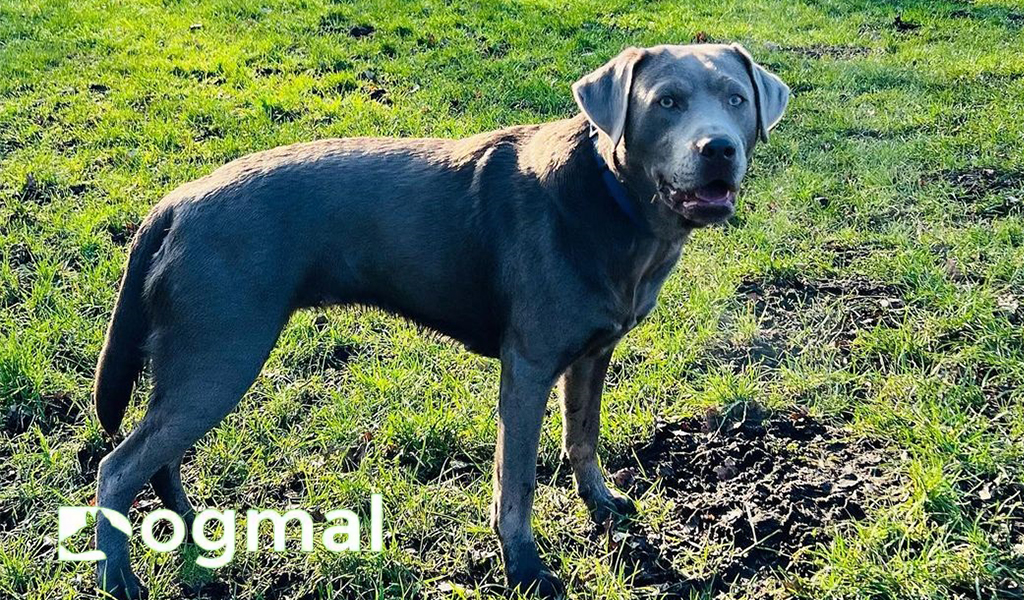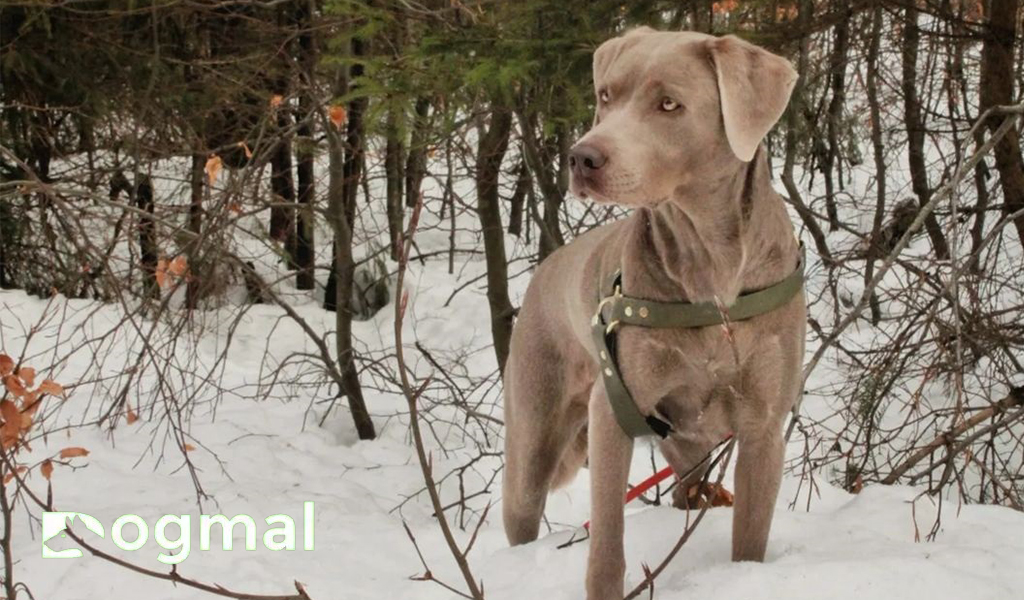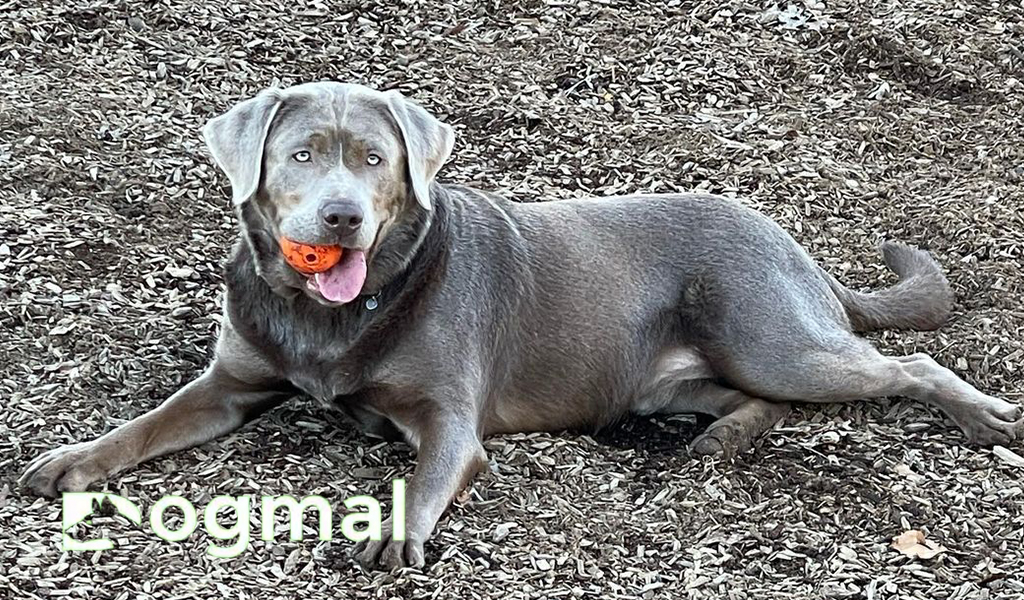The Silver Lab is a wonderful, active, fun and sociable dog. It has a sweet disposition and a traditional Labrador look with beautiful silver curves.
A wonderful family pet that is perfect for busy households. They require a lot of exercise because they are compact dogs, especially the Silver Labrador, which is often considered a variation of the Chocolate Labrador but differs genetically due to the thinness gene.
Highlights/Content
- History of Silver Lab Dog
- Breed Overview
- Appearance
- Temperament
- Health
- Silver Lab Dog Care
- Advantages and Disadvantages
- Photo gallery
History of the Silver Lab Dog
The Most Popular dog breed in the country is Labrador. In the 1800s, Labradors were developed as gun dogs to accompany hunters and retrieve shot game. Due to their devoted and loyal nature they have gained popularity as much-loved family dogs.
It is unknown how the Silver Labrador got its name. Some believe they were created on purpose, while others believe they arose naturally as a result of more dominant genes.
The Weimaraner and Chocolate Lab are believed to have been crossed to create the Silver Lab. In 1903, the British Kennel Club designated the Labrador Retriever as a separate breed.
Silver Lab Dog Overview
- Origin: Canada
- Nick Name: Silver Labrador, Labrador Retriever
- Life Span: 11-13 Years
- Height: 21-24 Inch
- Weight: 55-70 Pound
- Coat: Dense and Hard Coat
- Color: Chocolate, Yellow, Black
- Litter Size: 5-10 Puppies
- Breed Size: Medium To Large
- Energy Level: High
- Exercise Need: High
- Barking level: Low-moderate
- Breed Group: Sporting
Appearance
The silver Labrador looks just like any other color Labrador with the obvious exception of color. While many describe it as having a thin brown color, many others describe it as a bright silver color. The color of a Silver Labrador can vary depending on its parentage and genetic makeup.
Their muzzles are long and narrow, and their ears are larger than the typical Labrador. With a strong neck and muzzle. They have a long, thick tail that looks like an otter, which they use to swim in water.
Until they are about 6 to 8 months old, these dogs often have pale blue eyes; however, as they reach full maturity, they change to pale yellow eyes. The thick double coat of the Silver Labrador Retriever comprises a soft, fuzzy undercoat and a rough, long-haired outer layer.
Temperament
Silver Labs are intelligent and active dogs. They often succumb to their curiosity, but if kept in check, they can be pleasantly surprised in their quest for adventure. Labrador retrievers are famous for their sweet, friendly and kind personalities.
They are one of the most popular dog breeds, which is not surprising. Children get along well with other dogs and pets as well as strangers with well behaved Labradors.
This makes them one of the most child-friendly dog breeds and perfect family pets. After all, there are always things to play and discover with the youngsters nearby.
Health
The Silver Labrador has a generally good health and has an average lifespan of 11 to 13 Years. Silver Labradors can develop hip/elbow dysplasia and patella luxation, just like their counterparts, when it comes to their health. The first step in preventing unanticipated health issues is to purchase a lab puppy from a reputable breeder.
Hip and Elbow Dysplasia: This is a common health problem later in life for most dog breeds. It develops in the elbow and hip joints due to irregular growth, and symptoms can eventually include debilitating arthritis and joint discomfort
Eye Problems: Health Problems with Silver Labs Additionally, some Labradors get “eye difficulties.” PRA, cataracts, corneal degeneration, and retinal dysplasia are a few of the prevalent and frequent eye illnesses.
Color Dilution Alopecia (CDA): This disease is inherited. It primarily impacts skinny dogs. Itching, hair loss, dry skin, and thinning hair are some of its symptoms.
Silver Lab Dog Care?
Caring for a silver lab is very important to him. Silver labs tend to eat a lot. Stick to giving them enough nutritious food that they need every day. Silver Labradors need to be active, so give them exercise, but not more than 1 hour.
They should be taken to the vet to rule out any progressive or genetic diseases. They should also be careful about grooming and brushing. Timely training and socialization are very important.
Feeding
Every dog needs to eat properly to maintain a healthy weight. Silver Labradors should be fed a large breed formula designed for Labs and consume about 3 cups of food per day. When eating a high-quality, high-protein diet, an adult Lab needs between 1650 and 2400 calories per day.
Their daily caloric needs should ideally be split into two distinct mealtimes to aid with digestion. Calcium-rich foods should be considered when choosing a wet or dry dog food for puppies to avoid these problems later in life. Fish and chicken are two more excellent choices.
Monitoring his diet and treating consumption with any Labrador is important to prevent obesity and other health problems associated with being overweight. Feed him a balanced diet and try to avoid giving him human or high calorie foods like cheese.
Exercise
The dog needs a healthy diet and lots of exercise to stay in good shape. Generally speaking, a healthy adult Labrador needs at least 80 minutes of high-quality exercise each day. Customizing this for each individual dog is crucial, as some more energetic dogs will need more time and some more calm dogs will do well in a little less time.
They also enjoy swimming, playing, jogging and walking. Walking is a beneficial, steady dog activity. They can play games in a small yard or garden to give the dog proper exercise.
Play some tug-of-war or other activities with the flirt pole attached to the toy. Half an hour of playtime between two young dogs will give them a wonderful workout.
Grooming
The Silver Labradors have two coats to keep them comfortable against cold weather. Its undercoat is dense, thick and resistant to snow and water. Labradors shed moderate to heavy amounts. Their coats will need to be brushed once or twice a week.
Starting early can also make brushing easier as the silver Labrador puppy gets older. Use a body brush with fine bristles to remove any dry skin and help disperse oil. Bathe a fully grown Silver Lab once a month, then follow up as needed.
Every two months, trim the Silver Lab’s nails. Their gorgeous floppy ears need to be checked and cleaned frequently, to avoid any possible infection. Pet dental care is just as important as human dental care.
Training
Training is very important for every dog. The basics of training the majority of dogs remain constant. When training the Silver Lab, never use punishment or negative reinforcement. Even though it would be tempting to make them pay for bad things they did.
Silver Labrador Retrievers are excellent candidates for positive dog training because of their curiosity, playfulness, devotion, and love of goodies. Giving them behavioural instruction, obedience training, and socialization training is crucial.
Training sessions should be brief but frequent to prevent them from losing focus and ensure they remember the information you are teaching them. Training with Silver Labs can also become a regular pastime for both of you.
Advantages and Disadvantage of Silver Lab dog
Advantage
- They are very Easy to train.
- They are friendly and loving dogs with nice personalities.
- Labradors are excellent with kids.
Disadvantage
- They require a lot of space.
- There are more shader on them.
- They often experience separation anxiety.
Photo Gallery






